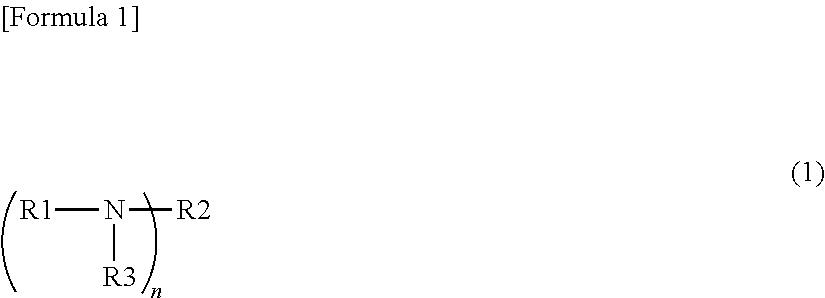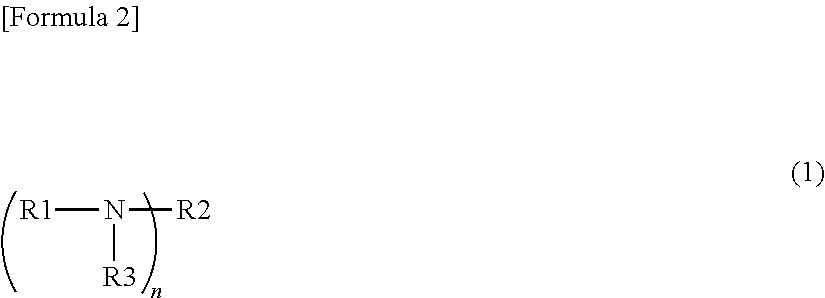Metallic pigment composition
a technology of metal pigments and compositions, applied in the direction of coatings, inks, transportation and packaging, etc., can solve the problems of inability to achieve adhesion and chemical resistance of metallic pigments obtained by insufficient storage stability of methods according to patent documents, etc., to achieve excellent adhesion and chemical resistance, high storage stability, and color tone. the effect of excellent
- Summary
- Abstract
- Description
- Claims
- Application Information
AI Technical Summary
Benefits of technology
Problems solved by technology
Method used
Image
Examples
example 1
[0110]To 135 g of a commercially available aluminum paste (produced by Asahi Kasei Chemicals Corporation, trade name “GX-3100 (average particle diameter: 10.5 μm, nonvolatile content: 74%)”) was added 698 g of mineral spirit and dispersed therein to form a slurry, and a solution in which 0.5 g of a hydrate of phosphotungstomolybdic acid (H3PW6Mo6O40) was dissolved in 30 g of isopropanol was gradually added while stirring the slurry and stirred for 1 hour while maintaining the temperature of the slurry at 70° C. Then, 0.75 g of acrylic acid was added and stirred for 30 minutes. Thereafter, 5.6 g of trimethylolpropane triacrylate (TMPTA), 2.4 g of di-trimethylolpropane tetraacrylate (DTMPTA) and 3.0 g of 2,2′-azobis-2,4-dimethylvaleronitrile (ADVN) were dissolved in 80 g of mineral spirit, and the obtained solution was added over 3 hours. Thereafter, the stirring was continued for additional 2 hours. After the completion of the reaction, the obtained slurry was filtrated after cooling...
example 2
[0111]2.5 parts by weight of tridecyl acid phosphate was added based on 100 parts by weight of an aluminum metal component in the aluminum pigment composition obtained in Example 1, and kneaded at 40° C. for 2 hours to obtain an aluminum pigment composition.
example 3
[0112]The same procedure as in Example 1 was performed except that 0.75 g of acrylic acid was changed to 0.80 g of methacrylic acid, and 2.0 g of divinylbenzene was used in addition to 5.6 g of trimethylolpropane triacrylate (TMPTA) and 2.4 g of di-trimethylolpropane tetraacrylate (DTMPTA), thereby obtaining 159 g of an aluminum pigment composition having a nonvolatile content of 70%.
PUM
| Property | Measurement | Unit |
|---|---|---|
| thickness | aaaaa | aaaaa |
| thickness | aaaaa | aaaaa |
| particle diameter | aaaaa | aaaaa |
Abstract
Description
Claims
Application Information
 Login to View More
Login to View More - R&D
- Intellectual Property
- Life Sciences
- Materials
- Tech Scout
- Unparalleled Data Quality
- Higher Quality Content
- 60% Fewer Hallucinations
Browse by: Latest US Patents, China's latest patents, Technical Efficacy Thesaurus, Application Domain, Technology Topic, Popular Technical Reports.
© 2025 PatSnap. All rights reserved.Legal|Privacy policy|Modern Slavery Act Transparency Statement|Sitemap|About US| Contact US: help@patsnap.com



